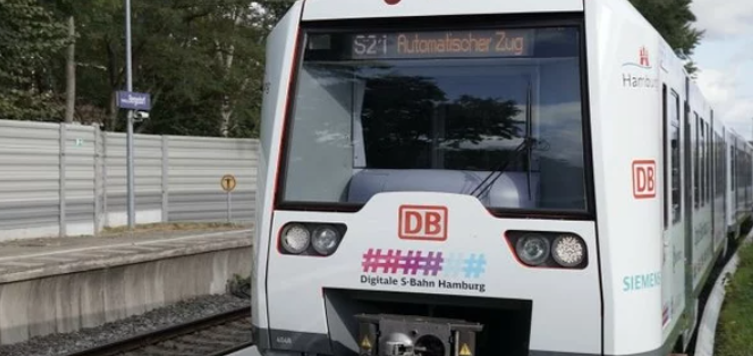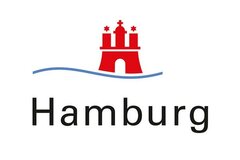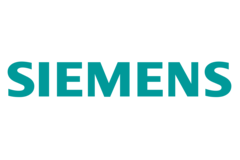
Digital S-Bahn Hamburg
The Digital S-Bahn Hamburg is the first project to be implemented as part of the "Digitale Schiene Deutschland" sector initiative. For the first time, highly automated driving (ATO GoA2) was implemented on the basis of the European train control system ETCS ("ATO over ETCS").
Our partners




"Digital S-Bahn Hamburg" is the name of the first project implemented by Deutsche Bahn as part of the sector initiative “Digitale Schiene Deutschland”. The demand for local public transport, especially in metropolitan areas, has been rising sharply for years. To create the necessary capacity, urban rail operations must be digitalized. To achieve this goal, Deutsche Bahn entered a partnership with the Hanseatic City of Hamburg and Siemens Mobility back in July 2018. The "Digital S-Bahn Hamburg" pilot project shows how new technologies can make local transport in growing cities more efficient.
The core of the project is the networking of the infrastructure with the vehicle based on the European Train Control System (ETCS) and Automatic Train Operation (ATO) technologies. The aim was not only to implement ATO using ETCS in technical and operational terms, but also to get it approved for regular passenger services in a timely manner. This was an important milestone for the introduction of ATO in the German rail network.
Highly automated rail operations bring numerous advantages: The cycle time on the same route can be significantly shortened when equipped across the board - without having to rebuild new tracks. Energy efficiency increases, as automated acceleration and braking reduces energy consumption. Overall, operations become more reliable and stable.
Starting, accelerating, braking, stopping: The highly automated trains do all of this by themselves on the track equipped for this purpose. On the appropriately upgraded section, the train driver only takes on a monitoring function and only intervenes in the event of disruptions.
The four trains are even staged fully automatically: when the S-Bahn trains travel to the stabling sidings or to the platform at Bergedorf station, they do so without any train drivers. The movement of the vehicles is monitored by a so-called remote train driver from the signal box. A graphical user interface informs him about the current status of the driverless vehicle (e.g. position or speed). Another feature is the automatic opening and closing of doors on the platform. This required the integration of new door control elements and sensors.
At the heart of the project are the Automatic Train Operation (ATO) train control system and the European Train Control System (ETCS) - two technologies whose interaction is being used here for the first time. In order to implement digital operation, the suburban trains were retrofitted: Balise antennas, radars and ETCS and ATO computers on the train allow highly automated driving. The infrastructure along the route has also been upgraded with an upgraded signal box, revised signal technology and Eurobalises. The electronic interlocking monitors the correct position of the points and sets the signals for the trains.
The new ETCS computer receives information for train control in the signal box, including signal commands and speed limits. The computer sends the resulting driving instructions to the vehicles by radio and continuously monitors their execution. In addition to the Radio Block Center, the ETCS also includes the balises installed in the track. These data points transmit additional static information, such as positioning, to the vehicle.
The four vehicles are controlled by radio signal. In ETCS mode, radio-based communication between the on-board units and the trackside equipment is realized via the GSM-R train radio standard, while in ATO mode, communication takes place via a 4G network. A specially configured computer was installed in the vehicle for the fully automatic switching movement, which was temporarily demonstrated during the ITS World Congress in Bergedorf in October 2021. Communication takes place in a 5G network set up for the first time.
There is an ETCS and an ATO on-board unit in the train itself. As soon as the train is running under ETCS monitoring, the train driver can activate highly automated driving. To do this, the ATO on-board unit receives the current timetable data from the ATO computer installed on the trackside and the driving license from the ETCS computer in the vehicle. From this, the ATO system creates an energy-optimized speed profile. Between Rothenburgsort and Berliner Tor, the train driver takes over control of the S-Bahn again in the usual way. The system is comparable to an autopilot, as used in aviation. However, the train driver always has the last word. He can take over control at any time.
All four converted Class 474 trains have now been in regular service since September 2022. In the future, further existing vehicles of the 474 series and 64 further vehicles of the new 490 series will be equipped with "ATO over ETCS".
- The frequency on the same route can be significantly shortened without building a meter of new track.
- Stable, reliable operation in everyday use
- Greater energy efficiency thanks to automated acceleration and braking
DB and Siemens presented the first four appropriately converted trains at the ITS World Congress in October 2021. Dr. Richard Lutz, CEO of DB, and Dr. Roland Busch, CEO of Siemens AG, presented the vehicle of the Digital S-Bahn Hamburg project together with Dr. Peter Tschentscher, First Mayor of the Free and Hanseatic City of Hamburg, during the premiere ride.
In addition to the highly automated journey to Bergedorf, the fully automated switching movement in Bergedorf was also demonstrated. Demonstration runs were offered to trade fair visitors throughout the week. In addition to the Digital S-Bahn Hamburg project, the sister project Sensors4Rail was also part of the "Future Rail Experience Tour". An average of 60 participants took part in the moderated rides and were able to gain an impression of the technology and new processes.